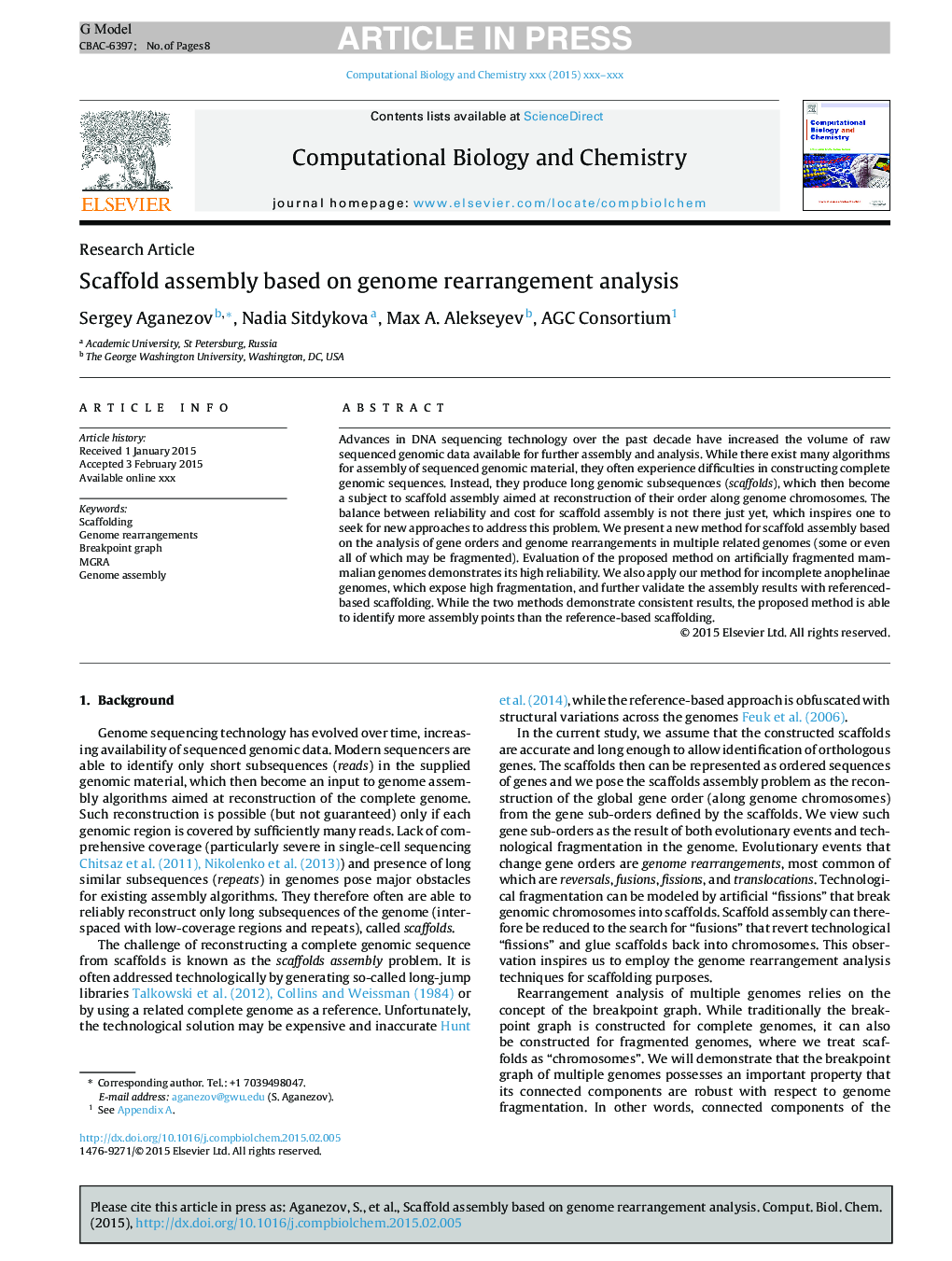| Article ID | Journal | Published Year | Pages | File Type |
|---|---|---|---|---|
| 6487101 | Computational Biology and Chemistry | 2015 | 8 Pages |
Abstract
Advances in DNA sequencing technology over the past decade have increased the volume of raw sequenced genomic data available for further assembly and analysis. While there exist many algorithms for assembly of sequenced genomic material, they often experience difficulties in constructing complete genomic sequences. Instead, they produce long genomic subsequences (scaffolds), which then become a subject to scaffold assembly aimed at reconstruction of their order along genome chromosomes. The balance between reliability and cost for scaffold assembly is not there just yet, which inspires one to seek for new approaches to address this problem. We present a new method for scaffold assembly based on the analysis of gene orders and genome rearrangements in multiple related genomes (some or even all of which may be fragmented). Evaluation of the proposed method on artificially fragmented mammalian genomes demonstrates its high reliability. We also apply our method for incomplete anophelinae genomes, which expose high fragmentation, and further validate the assembly results with referenced-based scaffolding. While the two methods demonstrate consistent results, the proposed method is able to identify more assembly points than the reference-based scaffolding.
Related Topics
Physical Sciences and Engineering
Chemical Engineering
Bioengineering
Authors
Sergey Aganezov, Nadia Sitdykova, AGC Consortium AGC Consortium, Max A. Alekseyev,
